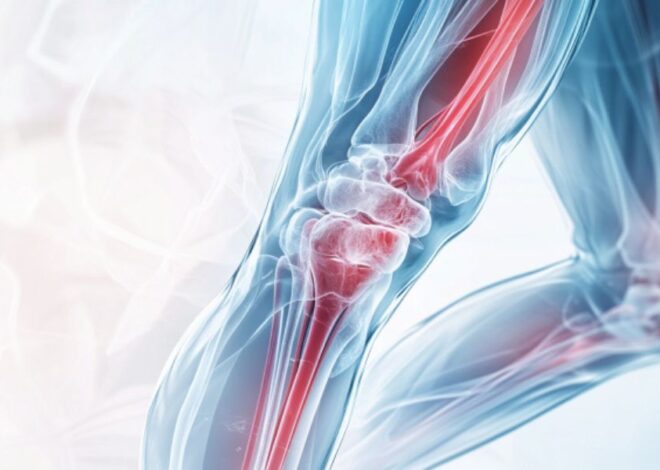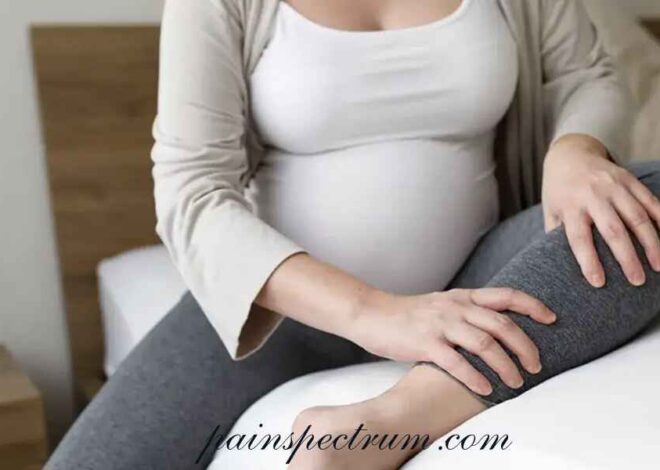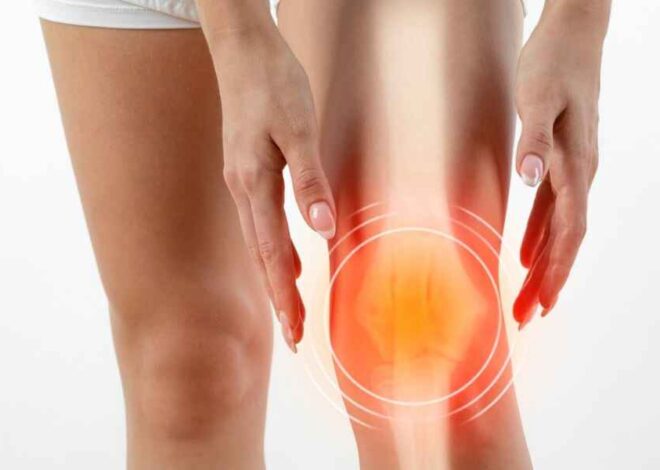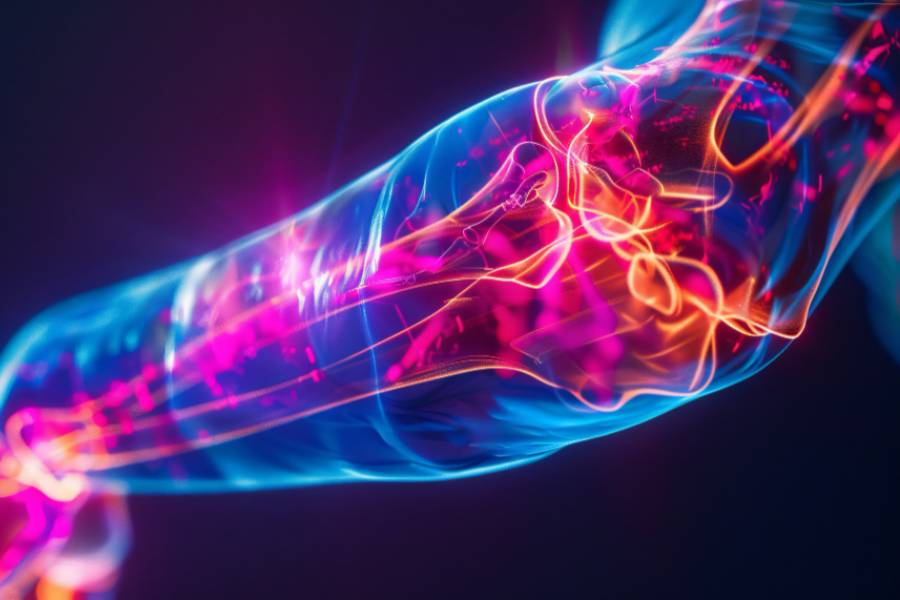
Can Sciatica Causes Knee Pain: Best Guide 2024
Last updated on December 6th, 2025 at 12:45 pm
Sciatica causes pain in the knee and along the sciatic nerve. This happens when the nerve is compressed, damaged, or irritated. Treatments include medication and lifestyle changes.
The sciatic nerve starts in the lower back, goes down the back of the leg, and ends at the knee. Research shows that sciatica is more common in people over 40 years old.
Sciatica can start gradually or suddenly. Symptoms can be mild or severe, and each person’s experience differs. The most common cause of sciatica is a bulging or herniated disc in the spine.
Most people recover from sciatica within 4 to 6 weeks without serious medical problems.
However, according to NHS Inform in the UK, a doctor may want to do further tests if the pain doesn’t go away after 6 weeks. This article contains everything you need to know.
Table of Contents
The Connection Between Sciatica and Knee Pain
Sciatica mainly affects the back and legs but sciatica can also cause knee pain. This happens because of the interconnected nature of the nervous system and the way pain signals travel through the body. When the sciatic nerve is irritated or compressed, it can send pain signals to other areas, including the knee.
How Sciatica Causes Knee Pain
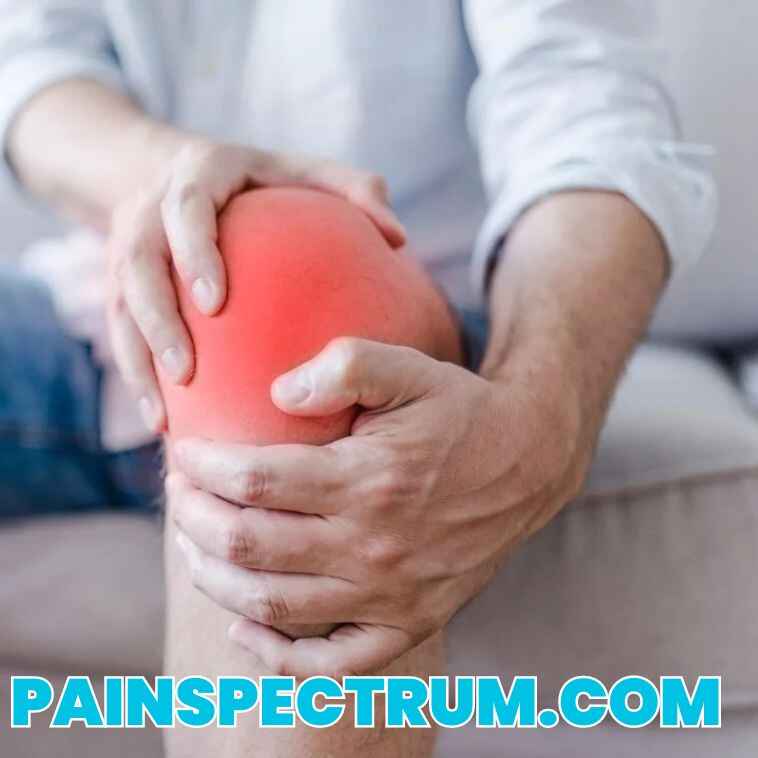
Here are some reasons why sciatica might cause knee pain:
| Causes | Description |
|---|---|
| Nerve Compression | Compression or irritation of the sciatic nerve, leads to pain radiating down to the knee. |
| Muscle Weakness | Sciatica causes weakness in leg muscles, including those around the knee, affecting their function and causing discomfort. |
| Referral Pain | Pain originating from the lower back or buttocks can radiate down the leg to the knee, causing pain. |
| Inflammation | Inflammation around the sciatic nerve or tissues near the knee joint can lead to pain in the knee area. |
| Postural Changes | Changes in posture due to sciatica pain can alter walking or standing mechanics, potentially stressing the knee joint. |
| Disc Herniation | A herniated disc in the lower spine presses on the sciatic nerve, causing pain that may extend to the knee. |
| Spinal Stenosis | Narrowing of the spinal canal puts pressure on the sciatic nerve, causing pain that radiates to the knee. |
| Spondylolisthesis | Compression or irritation of the sciatic nerve leads to pain radiating down to the knee. |
| Piriformis Syndrome | Tightening or spasm of the piriformis muscle near the sciatic nerve compresses the nerve, causing knee pain. |
| Degenerative Disc Disease | Wear and tear on spinal discs lead to bulging or herniation, irritating the sciatic nerve and causing knee pain. |
Symptoms of Knee Pain Related to Sciatica
- Knee pain associated with sciatica can manifest in several ways:
- Sharp or shooting pain that travels from the lower back to the knee.
- Dull ache in the knee that accompanies back pain.
- Increased pain in the knee when bending or lifting.
- Tingling sensation around the knee.
- Numbness in the knee area.
- Pain that worsens with prolonged sitting.
- Difficulty standing up due to knee pain.
- Pain that radiates down the leg to the knee.
- Weakness in the knee or leg muscles.
Pain that worsens with movement, such as walking or climbing stairs. These symptoms happen because the sciatic nerve, which is the biggest nerve in the body, starts from the lower spine and goes down the legs, passing close to the knee. When this nerve gets pressed or irritated, it can cause pain in the knee, even though the main problem is somewhere else along the nerve’s path.
Read More: Managing Sciatica and Knee Pain: 9 Surprising Facts
Duration of Sciatica-Related Knee Pain

Sciatica-related knee pain can be highly variable in both duration and severity, contingent upon its underlying cause and individual circumstances.
Acute sciatica, characterized by sudden onset, typically lasts from a few weeks to several months and often shows improvement with time and appropriate management strategies.
Conversely, chronic sciatica persists beyond three months, necessitating ongoing therapeutic approaches as it may not resolve spontaneously.
The severity and recurrence of knee pain associated with sciatica also vary widely among individuals, with intermittent episodes being common even after initial improvement.
Effective management focuses on addressing the root cause, which could stem from conditions like herniated discs or spinal stenosis compressing the sciatic nerve.
Ultimately, the duration of knee pain due to sciatica hinges on whether it is acute or chronic and the effectiveness of implemented treatments in alleviating symptoms over time.
Diagnosis of Sciatica-Related Knee Pain
A healthcare provider will take a detailed medical history and perform a physical examination to identify the source of the pain.
Imaging Tests
- X-rays: To check for bone abnormalities.
- MRI: To visualize soft tissues and identify herniated discs or spinal stenosis.
- CT Scan: To get detailed images of the spine.
Nerve Tests
- Electromyography (EMG): To measure electrical activity in muscles and nerves.
- Nerve Conduction Velocity (NCV) Test: To measure the speed of electrical impulses through the nerve.
Treatments for Sciatica-Related Knee Pain
- Medications: NSAIDs (like ibuprofen) or muscle relaxants prescribed by a doctor.
- Steroid Injections: Injected into the spine to reduce inflammation around the sciatic nerve.
- Physical Therapy: Exercises to strengthen muscles and improve flexibility.
- Heat Therapy: Apply heat packs to relax muscles and alleviate pain.
- Cold Therapy: Use ice packs to reduce inflammation and numb the affected area.
- Massage Therapy: Therapeutic massages to relieve muscle tension and pain.
- Ergonomic Adjustments: Modify workspace or furniture for better posture.
- Lifestyle Changes: Avoid prolonged sitting and adopt regular exercise.
- Acupuncture: Sessions for pain relief.
- Chiropractic Care: Adjustments to align the spine and reduce nerve irritation.
- Relaxation Techniques: Yoga or meditation to reduce stress and tension.
- Surgical Intervention: If someone has sciatica pain due to a slipped disc in the spine, a nearby blood clot, an abscess, or a tumor near the spine, doctors may recommend surgery.
Read More: Best Treatment Options for Sciatica Pain
Consult a healthcare provider for personalized treatment recommendations.
At-Home Stretches and Exercises

- Hamstring Stretches: Gentle hamstring stretches can help relieve tension.
- Knee-to-Chest Stretch: This stretch can help alleviate lower back pressure and reduce sciatic pain.
- Piriformis Stretch: Targeting the piriformis muscle can help reduce sciatic nerve compression.
Preventing Sciatica-Related Knee Pain
To prevent knee pain linked to sciatica, it’s crucial to address the underlying issue of sciatic nerve irritation or compression. Regular exercise that strengthens core muscles and improves flexibility, such as yoga or Pilates, can stabilize the spine and pelvis.
Maintaining good posture while sitting, standing, and walking, and using supportive cushions or ergonomic chairs, helps alleviate strain. Managing weight to reduce pressure on the spine and nerves is essential, as excess weight can worsen sciatic nerve pain.
When lifting heavy objects, using proper lifting techniques that engage the legs rather than the back minimizes strain. Supportive footwear that maintains body alignment is recommended.
Alternating ice packs to reduce inflammation in the first 48 hours with heat therapy afterward helps relax muscles and improve circulation. Over-the-counter pain relievers like ibuprofen can temporarily alleviate pain, and supplements such as vitamin B12 or magnesium may be beneficial with professional advice.
Physical therapy offers tailored exercises to relieve sciatic pain and prevent knee discomfort. Taking breaks from prolonged sitting, using supportive pillows for sleep, quitting smoking, managing stress through relaxation techniques, and consulting healthcare professionals for persistent or severe knee pain are crucial steps in managing sciatica effectively.
When to See a Doctor
If you have sciatica pain, you should talk to a doctor because they can help diagnose the issue. A healthcare professional can give you a thorough evaluation and recommend appropriate treatment after conducting diagnostic tests.
If you’ve tried home remedies and lifestyle changes but haven’t experienced relief after several weeks, you should seek medical advice. If the pain worsens or interferes with your daily activities, it’s also important to consult a doctor.
If someone is in distress, they should always call 911.
sciatica Knee Brace
Special knee braces for sciatica are not commonly available but sometimes Knee braces are usually used for knee-related issues like instability, ligament injuries, or arthritis. However, some types of knee braces may help with sciatica:
- Patellar stabilization braces: These braces strengthen the patellar (kneecap) and can help keep the knee in proper alignment, potentially aiding in relieving sciatica symptoms.
- Compression knee sleeves: These apply pressure around the knee, which can improve blood circulation and potentially alleviate sciatic nerve pain.
- Posture correction braces: These are designed to correct posture, which can indirectly reduce strain on the lower back and possibly ease sciatic nerve discomfort.
These braces may provide some relief for sciatica symptoms by supporting the knee or improving overall posture, but they are not specifically made for treating sciatica itself.
Can a Torn Meniscus Cause Sciatic Nerve Pain?
A torn meniscus typically affects the knee joint, causing pain and stiffness. While it doesn’t directly cause sciatic nerve pain, it can change how you walk or move, which might indirectly lead to issues like muscle imbalances or altered posture. These changes can sometimes put pressure on the sciatic nerve, potentially causing discomfort in the lower back or legs. However, sciatic nerve pain is usually more directly related to issues in the spine, like a herniated disc.
FAQs
Can sciatica cause knee pain and swelling simultaneously?
Yes, sciatica can cause both knee pain and swelling. When the sciatic nerve is compressed or irritated, it can send pain signals down the leg, affecting the knee joint and surrounding tissues. Inflammation from nerve compression may also contribute to localized swelling around the knee.
How effective are knee braces in managing sciatica-related knee pain?
Knee braces can provide support and help stabilize the knee, which may indirectly alleviate some symptoms of sciatica-related knee pain. However, their effectiveness can vary depending on the specific cause and severity of the sciatic nerve compression. Consultation with a healthcare provider is recommended to determine if a knee brace is suitable for individual needs.
What are some non-traditional therapies or alternative treatments for sciatica knee pain?
Alternative treatments for sciatica knee pain may include acupuncture, chiropractic care, herbal supplements (like turmeric or devil’s claw), yoga, and mindfulness-based stress reduction techniques. These approaches aim to reduce inflammation, improve flexibility, and promote overall well-being.
How does weather or climate affect sciatica knee pain symptoms?
Changes in weather or climate, particularly shifts in barometric pressure, humidity, or temperature, may affect sciatica knee pain symptoms. Some individuals report increased pain or stiffness during cold, damp weather conditions. Managing symptoms during such weather changes may involve staying warm, maintaining good posture, and continuing gentle exercises.
Is there a link between sciatica knee pain and dietary habits?
While specific dietary habits may not directly cause sciatica knee pain, maintaining a healthy weight through balanced nutrition can reduce pressure on the spine and nerves, potentially alleviating symptoms. Some people find that consuming anti-inflammatory foods such as fruits, vegetables, and omega-3 fatty acids may help manage pain and inflammation associated with sciatica.
Can stress or emotional factors exacerbate sciatica knee pain?
Yes, stress and emotional factors can exacerbate sciatica knee pain. Stress contributes to muscle tension, which can increase pressure on the sciatic nerve and worsen symptoms. Additionally, emotional stress may affect pain perception and tolerance. Managing stress through relaxation techniques, mindfulness, and regular exercise can help mitigate its impact on sciatica.
Are there specific ergonomic considerations for managing sciatica knee pain at work?
Yes, ergonomic adjustments can help alleviate sciatica knee pain at work. This includes using an ergonomic chair with good lumbar support, maintaining proper posture while sitting, adjusting the height of the desk and computer screen to reduce strain on the neck and back, and taking regular breaks to move and stretch. Proper lifting techniques and avoiding prolonged sitting are also crucial.
Conclusion
Sciatica causes knee pain because of how the sciatic nerve runs down the leg. When this nerve gets pressed or irritated, it can send pain signals to the knee. Treatments like medications, exercises, and sometimes surgery can help relieve this pain. If knee pain linked to sciatica lasts longer than six weeks or gets worse, it’s important to see a doctor for further evaluation and care. Taking steps to prevent sciatica, such as staying active and using proper posture, can also help manage this condition.
Reference:
https://www.medicalnewstoday.com/articles/can-sciatica-cause-knee-pain#when-to-see-a-doctor.
https://www.spine-health.com/blog/does-sciatica-cause-knee-pain.
